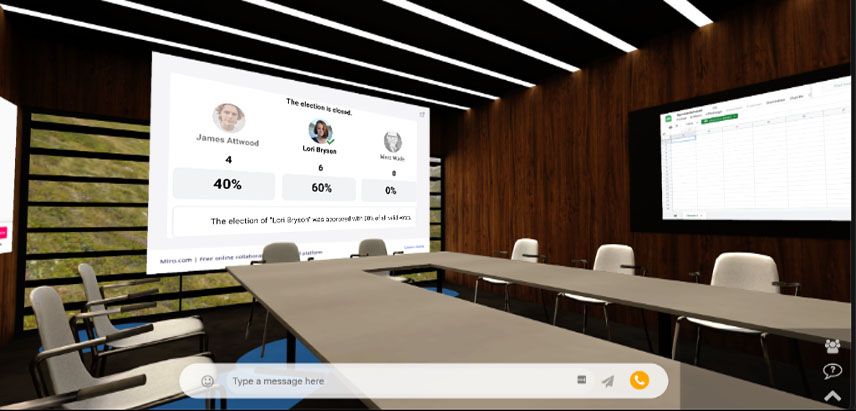The interaction of FOM and Metaverse solutions. This is how event organizers can take advantage of the synergies.
A guest article by Michael Alf, founder of the consulting firm Alf Global Services
Over the past two years, we've all learned a lot about online meetings and events. Most of us have had both positive and not so positive experiences and have identified what works well online and what would be better done physically.
Since the end of 2021, the topic of "metaverse" has come to the fore in this context. Here we are still in the experimentation and definition phase. What is certain is that a lot of money is flowing into the topic and many experts predict that the metaverse will be the next "Big Thing".
On a practical level, I would like to understand the metaverse here as a digital representation of the physical world. This can be in 2D, 3D or even VR/AR. From my point of view, there is not just one metaverse, but a multitude of different metaverses, most of which are interconnected.
In most discussions, however, the Metaverse is seen more as a VR application. This is certainly not entirely wrong, since this is where most of the development and investment takes place.
Formal meetings and the metaverse
Now the question arises whether formal meetings (i.e. general meetings, etc.) should also take place as Formal Online Meetings (FOMs) in the metaverse. Formal meetings are sometimes "dry" and "monotonous" events where formalities have to be observed and strict requirements have to be followed.
By using FOM software, many of these processes can be automated and simplified, making FOMs more interactive, reducing formal overhead, and significantly improving the meeting experience by making it run more smoothly. The question now is whether a digital solution like a Metaverse can also add value to an FOM?
I would like to make three arguments for running an FOM in a metaverse solution such as Mootup.
Integration into larger settings / events
One of the great advantages of digital or hybrid event platforms is the representation of typical event situations. Events have the advantage over normal video conferences that they support numerous parallel activities. In addition, there are a number of interaction possibilities between the participants.
Now, if a major event includes a FOM, there are advantages to integrating it with a metaverse. For example, you could run the FOM using FOM software like Linkando while the regular attendees enjoy the event or conference.
An example of this is an extended board meeting with legally secure elections: While the participants entitled to vote join the FOM, the other participants can stay in the metaverse. After the FOM, for example, the voting results of the board meeting could be presented and discussed virtually on a large scale.
With appropriate integration, the experience succeeds for all participants without media or system discontinuity, which significantly increases acceptance.
Additional interaction and collaboration capabilities
Platforms like Mootup allow numerous integrations of different tools like Miro, Google Sheet, YouTube or Linkando. This is helpful when further collaboration is to be supported in addition to FOM.
Specifically, the team that meets for FOM could finalize or even work out the results beforehand in a separate workspace. If this is done in a highly interactive and visual platform like Mootup, collaboration becomes much easier despite the virtuality.
Since the development of the results is subject to less strict and formal rules compared to the FOM, the combination of different tools lends itself to this. For example, the results can be transferred from Google Sheet to the FOM tool and reconciled accordingly. In this scenario, too, the great advantage is the system-break-free integration and the simple usability for all participants.

Higher attractiveness
Virtual platforms offer a high level of attractiveness and visual and acoustic stimulation due to their graphical representation. This makes participation more attractive and can lead to higher "stickiness." Participants are more likely to stay and not engage with other topics.
At the same time, the robustness and functionality of a FOM software is still used.
This is particularly suitable for larger FOMs, where most participants tend to be spectators and may only ask a question. Offering this group something "special" and at the same time also making an FOM "interesting" and attractive by means of FOM software is the great opportunity of integrating such solutions.
Conclusion: FOMs are increasingly integrated into the metaverse
The world of events has changed permanently during the COVID pandemic. Of course, some events will return to physical models. Many will seek a hybrid path that combines the benefits of both approaches.
However, there are also many reasons to opt for a purely digital solution. Arguments such as reach, cost, time and sustainability are the key drivers here. In the future, this type of event in particular will make use of the various digitization approaches such as Metaverse and FOM solutions...
Formal meetings have their own rules and requirements. At the same time, the expectation of an attractive presentation has become much higher. This is achieved by integrating FOM and Metaverse solutions.
Is the Metaverse also interesting for you? And how do you use FOM software in your organization? Feel free to write to us at contact@fom-magazin.de







